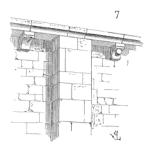
The need for life distributions
Maintenance and Reliability practitioners often need to find quick methods to estimate life distributions in order to get some urgent answers to a customer. The tempting solution and easy way out to this is to refer to a handbook or publication out there. Also known as “Reliability Data” handbooks. These publications would have “ready to go” life distributions. However, this can come with multiple pitfalls listed as follows.
1. The type of statistical distributions available
In very well renowned publications out there, there is an extensive array of life distributions. Sometimes in the thousands relating to a large variety of equipment. That’s great because I can find the exact equipment I am looking for. This can be very enticing to solve one’s immediate problem. It can however become a can of worms.
The life distribution provided is practically always exponential. An exponential distribution is easy to use and often provides great theoretical examples to budding Reliability Engineers. However, it is linked to the “cursed” Mean Time between Failure (MTBF) syndrome. The risk associated with using MTBF for costly investments is discussed in various publications. I will not be going any further on this topic. Most equipment types would have an increasing failure rates towards their end of life. The exponential distribution does not allow for this. It is a distribution with a constant failure rate.
2. The origin of the data and distributions
It is important to know where the data used to make the distributions originates. For example, if the data originates from equipment used in high temperature regions (e.g. Sahara desert), it cannot be used to make decisions on equipment in low temperature regions (e.g. Arctic)
3. The type of equipment referenced
A pump can come in many different forms and applications. It is important to know what type of equipment the distribution refers to. For example, is it a centrifugal or reciprocating pump? Those have very different mechanical arrangements and hence different failure modes. And subsequently different life distributions.
Referring to a pre-existing databases or handbooks might be and easy way out of getting the answer to your customer. However, the answer could be incorrect and therefore costly especially if it involves multi million-dollar capital investments. Employee or public safety is even more critical.
Some suggested approaches
- If pressed by the customer to use data from a handbook that is in your view incorrect, make them aware of the risks incurred.
- Ask the publisher for the raw data. You might get the following answers:
- “The records are lost” or..
- “It is confidential data”. Hint: ask if the name of the customer can be omitted from the data. You never know, you might get lucky if you persist. At the worst you would have tried. Another suggested approach is, in exchange for the records, offer to share your findings with the owner of the data. It’s kind of a “win-win” approach.
- Develop your own life distribution repository or “Weibull Library”.
The Weibull Library contains the life models for all the critical assets in the organization. This information is crucial for failure prediction and ultimately decision making in the domain of asset management. It is the company’s own and true version of a “failure database”. It avoids the use other generic external databases that might not reflect the true behavior of the assets in your organization.
In conclusion, I have chosen not to mention any publications in this article. However, as a Reliability Engineering practitioner, I have been often disappointed by the quality of the information provided by the handbooks I came across. Not necessarily by the variety of equipment type but more by the simplicity of the statistical distributions. In the wrong hands, rather than fix a problem, they could lead to far more damage!
 Ask a question or send along a comment.
Please login to view and use the contact form.
Ask a question or send along a comment.
Please login to view and use the contact form.
Leave a Reply